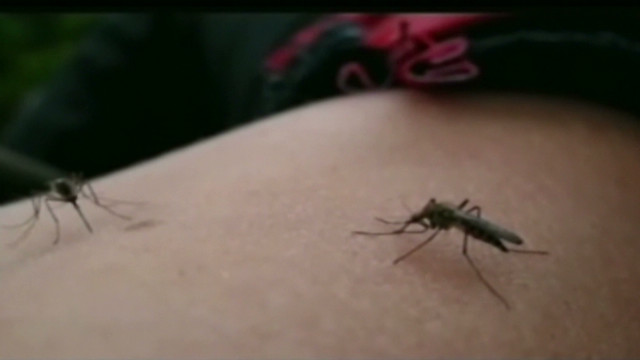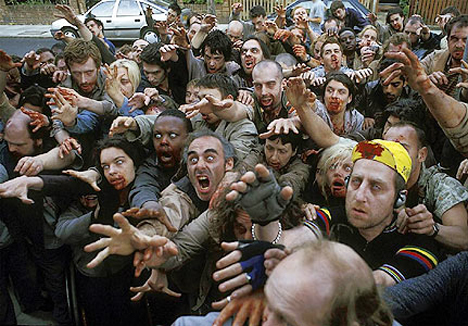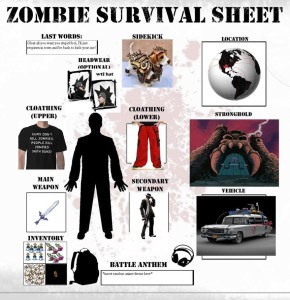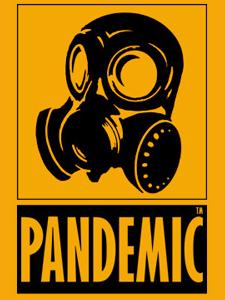Tag Archives: insect
AND MAN SHALL FALL! West Nile cases rising; 66 dead

(CNN) — Sixty-six people have died from West Nile virus infections this year, and the number of human cases has grown to 1,590, the U.S. Centers for Disease Control and Prevention said Wednesday.
That’s the highest case count through the last week of August since the virus was first detected in the United States in 1999.
Nearly half of all the infections have occurred in Texas, where officials said later Wednesday that 894 cases have been reported along with 34 deaths.
“Those numbers are going to go up,” said Dr. David Lakey, commissioner for the Texas Department of State Health Services.
Lakey said it looks like 2012 will be the worst year so far when it comes to West Nile virus cases. In 2003, Texas reported 40 deaths because of the virus, and health officials believe they will surpass that number this year.
All lower 48 states are now reporting West Nile activity, and 43 states have reported at least one person infected with the virus.
More than 70% of all West Nile virus cases in the United States are found in six states: Texas, South Dakota, Mississippi, Oklahoma, Louisiana and Michigan, according to the CDC.
While the CDC said these are the highest number of cases reported by the last week in August since the disease was first recorded in 1999, it’s not the highest number the country has seen. In 2003, the United States had 9,862 reported cases of West Nile virus, and in 2002 there were more than 4,100 cases and 284 fatalities.
In more than half the current nationwide cases, West Nile has led to neuroinvasive disease — serious illnesses like meningitis, encephalitis or virus-associated paralysis. About 10% of these cases can be fatal, according to the CDC, and a high proportion of those who survive can be left with longstanding neurological problems.
Older people are more vulnerable to severe illness from West Nile. So far, the median age among those with neuroinvasive disease this year is 58. In Texas, nearly two-thirds of all cases are in people older than 50.
Health officials do not yet know why there are more cases this year than in recent years.
Based on previous experiences with floods and hurricanes, health officials do not believe Hurricane Isaac will have a major impact on this year’s outbreak.
Mosquitoes that spread the virus breed in small nutrient-rich pools of water, such as the water found in old tires, so a large rainfall event or flooding usually washes out those small pools and eliminates breeding sites, said Dr. Lyle Petersen, who heads the CDC’s Division of Vector-Borne Infections.
But after the water recedes, there’s always the possibility that new small pools of water will form.
Petersen urged the public to take proper precautions to prevent getting sick regardless of whether they live in a state with high or low case counts.
To reduce your risk of exposure to mosquitoes and to prevent their breeding sites:
— Drain all standing water from flower pots, old tires, clogged rain gutters, etc., where mosquitoes breed.
— Use an insect repellant that contains DEET, picaridin or oil of lemon eucalyptus.
— Also wear long sleeves and long pants to protect your skin when you’re outside.
— Stay indoors at dusk and dawn because that’s when mosquitoes are most active.
ZOMBIE OUTBREAK? – Are Zombie Bees Infiltrating Your Neighborhood?
Parasite zombie flies and a honeybee; courtesy of John Hafernik/SF State University
Zombie bees are not science fiction. They are real—and real threat to already-threatened U.S. honeybee populations.
Honeybees (Apis mellifera) in California and South Dakota have been observed acting zombielike, wandering away from their hives at night and crawling around blindly in circles.
These insects have been rendered insensate by a parasitizing fly that lays eggs in the bees’ bodies. After the bee dies a lonesome death, pupae crawl out and grow to adult flies that seek new bodies to infect.
Such a sight startled John Hafernik, a professor of biology at San Francisco State University, when he looked at dead honey bees he had collected on campus. He soon started noticing clumps of dead bees under light fixtures in the area. He and his colleagues found that this bizarre bee behavior was the result of the fly Apocephalus borealis (they described their findings in January in the journal PLoS ONE). After sampling hives around the Bay Area, they found that, disturbingly, more than three quarters were infected with this parasite.
Honeybee colonies have been collapsing at an alarming rate in the U.S. for the past several years. And without these important pollinators, many of our favorite foods, from almonds to zucchini would be difficult to produce. Scientists have implicated viruses, fungi, mites and other invaders in colony collapse disorder, but Hafernik suspects this parasite is a new villain on the scene. “Honeybees are among the best-studied insects,” he said in a prepared statement in January. “We would expect that if this has been a long-term parasite of honeybees, we would have noticed.”
How do you catch a zombie bee? A “ZomBee” trap; courtesy of John Hafernik/SF State University
Now, to see how far the zombified bee problem has spread, he and his colleagues are enlisting the help of the whole continent. They have launched ZomBeeWatch.org, a citizen science project that allows people to help them track suspicious bee behavior and collect specimens. Through the project, which launches in full today, they are hoping to find “if this parasitism is distributed widely across North America,” Hafernik said in a new statement.
To help out, you can sign up to collect sick-looking or dead bee specimens and observe them to see if parasite fly pupae emerge. Industrious citizen scientists can build light traps to attract any parasitized bees in their area (full instructions are on their site). And the researchers promise that even bees that do not turn out to be true “ZomBees” are important to report in an effort to better understand contributors to colony collapse.
“If we can enlist a dedicated group of citizen scientists to help us, together we can answer important questions and help honeybees at the same time,” Hafernik said.
Not sure what a zombie bee looks like? Here’s a video clip of a sick bee: http://www.youtube.com/watch?v=xs32DCaxU1U&feature=youtu.be (Read more about parasites that make their hosts act like zombies in the article “Zombie Creatures.”)
In case you’re wondering what we’ve been wondering—ahem, what else can these zombie flies infect?—ZomBee Watch has an answer: “The zombie fly only parasitizes insects and does not lay eggs on or in humans,” according to its website. “As far as we know, it does not transmit any diseases that are contractible by humans.” As far as we know…
ZOMBIE PREPPERS – Using zombies to teach science and medicine
 With my colleague Greg Tinkler, I spent an afternoon last week at a local public library talking to kids about zombies:
With my colleague Greg Tinkler, I spent an afternoon last week at a local public library talking to kids about zombies:
The Zombie Apocalypse is coming. Will you be ready? University of Iowa epidemiologist Dr. Tara Smith will talk about how a zombie virus might spread and how you can prepare. Get a list of emergency supplies to go home and build your own zombie kit, just in case. Find out what to do when the zombies come from neuroscientist Dr. Greg Tinkler. As a last resort, if you can’t beat them, join them. Disguise yourself as a zombie and chow down on brrraaaaiiins, then go home and freak out your parents.
Why zombies? Obviously they’re a hot topic right now, particularly with the ascendance of The Walking Dead. They’re all over ComicCon. There are many different versions so the “rules” regarding zombies are flexible, and they can be used to teach all different kinds of scientific concepts–and more importantly, to teach kids how to *think* about translating some of this knowledge into practice (avoiding a zombie pandemic, surviving one, etc.) We ended up with about 30 people there: about 25 kids (using the term loosely, they ranged in age from maybe age 10 to 18 or so) and a smattering of adults. I covered the basics of disease transmission, then discussed how it applied to a potential “zombie germ,” while Greg explained how understanding the neurobiology of zombies can aid in fleeing from or killing them. The kids were involved, asked great questions, and even taught both of us a thing or two (and gave us additional zombie book recommendations!)
For infectious diseases, there are all kinds of literature-backed scenarios that can get kids discussing germs and epidemiology. People can die and reanimate as zombies, or they can just turn into infected “rage monsters” who try to eat you without actually dying first. They can have an extensive incubation period, or they can zombify almost immediately. Each situation calls for different types of responses–while the “living” zombies may be able to be killed in a number of different ways, for example, reanimated zombies typically can only be stopped by destroying the brains. Discussing these situations allows the kids to use critical thinking skills, to plan attacks and think through choice of weapons, escape routes and vehicles, and consider what they might need in a survival kit.
Likewise, zombie microbes can be spread through biting, through blood, through the air, by fomites or water, even by mosquitoes in some books. Agents can be viral, bacterial, fungal, prions or parasitic insect larvae (or combinations of those). Mulling on these different types of transmission issues and asking simple questions:
“How would you protect yourself if infection was spread through the air versus only spread by biting?”
“How well would isolation of infected people work if the incubation period is very long versus very short?”
“Why might you want to thoroughly wash your zombie-killing arrows before using them to kill squirrels, which you will then eat?” (ahem, Daryl)
can open up avenues of discussion into scientific issues that the kids don’t even realize they’re talking about (pandemic preparedness, for one). And the great thing is that these kids are *already experts* on the subject matter. They don’t have to learn about the epidemiology of a particular microbe to understand disease transmission and prevention, because they already know more than most of the adults do on the epidemiology of zombie diseases–the key is to get them to use that knowledge and broaden their thinking into various “what if” situations that they’re able to talk out and put pieces together.
It can be scary going to talk to kids. Since this was a new program, we didn’t know if anyone would even show up, or how it would go over. Greg brought a watermelon for some weapons demonstrations (household tools only–a screwdriver, hammer and a crowbar, no guns or Samurai swords) which was a big hit. Still, I realize many scientists are more comfortable talking with their peers than with 13-year-olds. Talking about something a bit ridiculous, like an impending zombie apocalypse, can lessen anxiety because it takes quite a lot of effort to be boring with that type of subject matter; it’s entertaining; and kids will listen. And after all, what you don’t know, might eat you.
How to Survive Miami’s Zombie Apocalypse, According to Zombie Expert Jonathan Maberry
 According to authorities, there’s a good chance that last week’s face-eating incident was the result of mind-altering drugs. (Just say no, kids.)
According to authorities, there’s a good chance that last week’s face-eating incident was the result of mind-altering drugs. (Just say no, kids.)
But according to the rest of us, it may signal the beginning of an inevitable threat Hollywood has warned us about for years: a zombie apocalypse. (Just ask The Miami zombie.)
Naturally, we’re all a little concerned that the undead may choose our sunny paradise as their next city of smorgasbord. After all, the heat is nice and lubricating for their stiff limbs.
So, in the interest of being prepared, we spoke to zombie expert Jonathan Maberry, author of Zombie CSU: The Forensics of the Living Dead on how best to survive a zombie apocalypse. Y’know, just in case.
Cultist: I’m sure you heard about the recent face-eating zombie attack in Miami. Any commentary?
Maberry: Within a few hours of the report hitting the news I was inundated by emails, IMs, Facebook and Twitter posts telling me, in essence, that the stuff I’ve been writing may not be fiction.
What would you say is the top rule of zombie survival?
Don’t be the dumb loudmouth in your group of survivors. These days, folks are likely to feed you to the zoms and make their escape during the chow-down.
What weapons or supplies should we procure to prepare ourselves?
In my series of teen post-apocalyptic zombie novels (Rot & Ruin, Dust & Decay, etc.) the smartest object of defense isn’t a gun or knife — it’s body armor made from carpet. You can’t really bite through it and there’s carpet everywhere. In the movies, the characters always run out into a crowd of zoms wearing ordinary clothes. I’d tear up the carpet, secure it with some duct tape (and we all have duct tape), and then stroll through the crowd of frustrated zombies.
Can we ply them with any other food besides human flesh?
If we accept the movies of George Romero as “zombie canon,” then the living dead eat everything — humans, animals, insects. We can always breed food for them. And it would provide jobs for farmers in a troubled economy.
How do zombies react to hot weather?
Zombies would thrive in hot weather. The heat keeps them limber. Cold would freeze them solid since body heat comes from blood flow. Of course, as the temperature rises, the zoms would spoil pretty quickly. Smelly … but eventually they’d fall apart.
Can zombies swim?
Zombies wouldn’t be a threat in the water. The freshly killed ones would sink like a stone without air in their lungs for buoyancy. The rotting ones might float because of gasses released by putrefaction, but they would lack the coordination for the mechanics of swimming and couldn’t strategize on how to overcome tides and currents. So, a great way to survive the zombie apocalypse is to strap on that Speedo and take a dip.
Are there different varieties of zombie?
There are several classifications of zombies. The old-school zombies are the raised dead used as slaves by priests of the Haitian religion of vodou. Since the 1960s we’ve come to hang the “zombie” nickname on flesh-eating ghouls of the Romero kind, and these are slow-moving, mindless corpses. Then there are the fast zombies, as introduced first in the film Return of the Living Dead (1985) and made famous in the 2004 Zack Snyder remake of Dawn of the Dead. Then you have the “rage virus-infected,” who are mindless humans infected by a disease that makes them kill everyone they meet. They were first introduced in George Romero’s 1973 flick The Crazies, then later became wildly popular in Danny Boyle’s 2002 classic, 28 Days Later and the 2010 remake of The Crazies. Oh, and Europe is famous for its demonically possessed zombies, and there have been a zillion of those films.
What’s the most common misconception about zombies?
The most common misconception about zombies is that the disease only spreads through bites. However Romero established that everyone who dies, no matter how or why, will rise as a zombies. Bites simply make it happen faster.
So there you have it. Get ready to tear up that carpet and make a swim for it, Miami.


